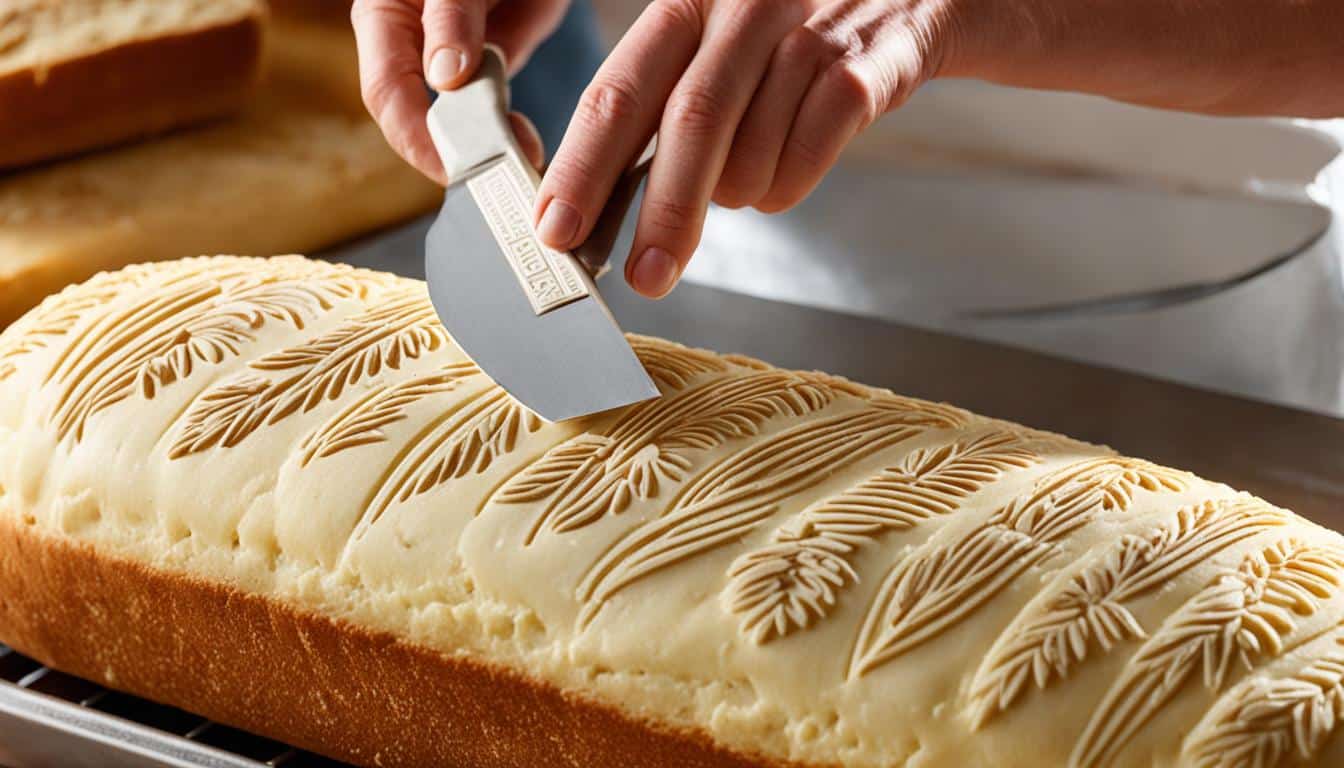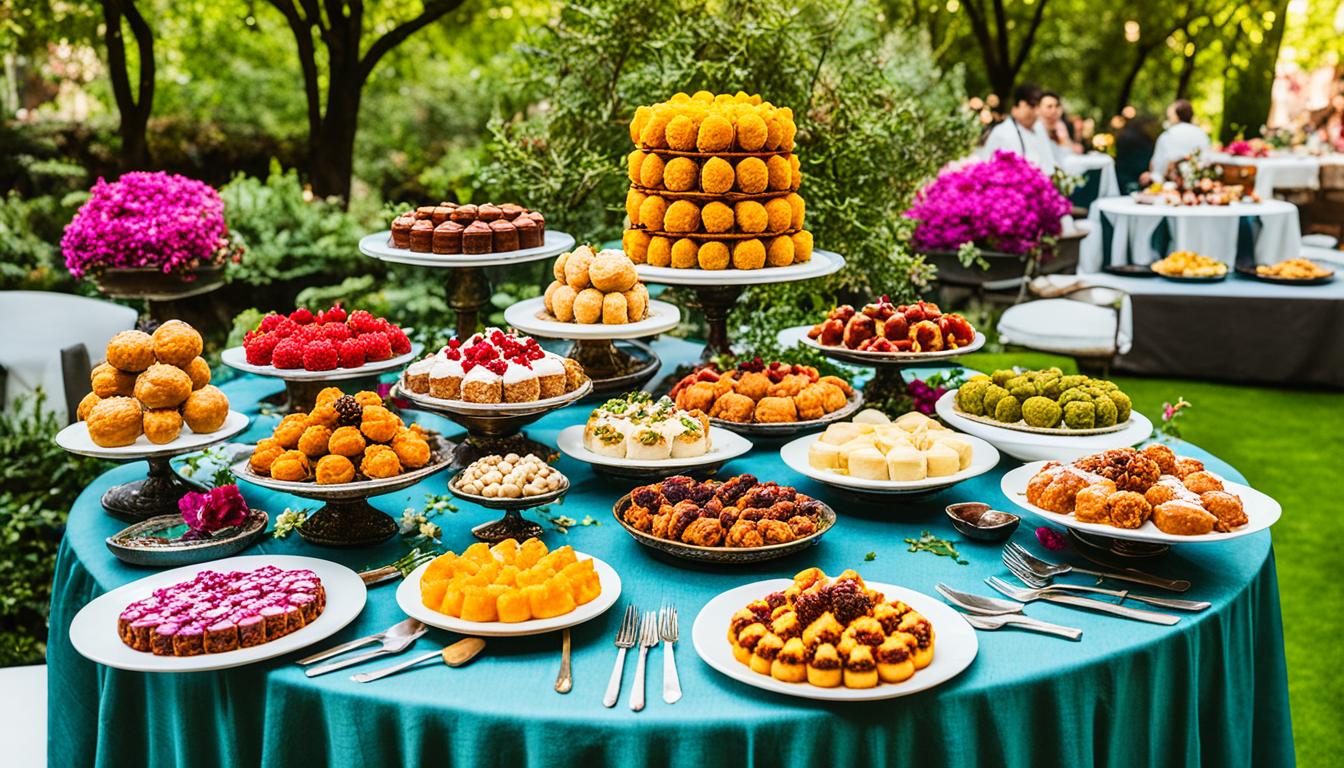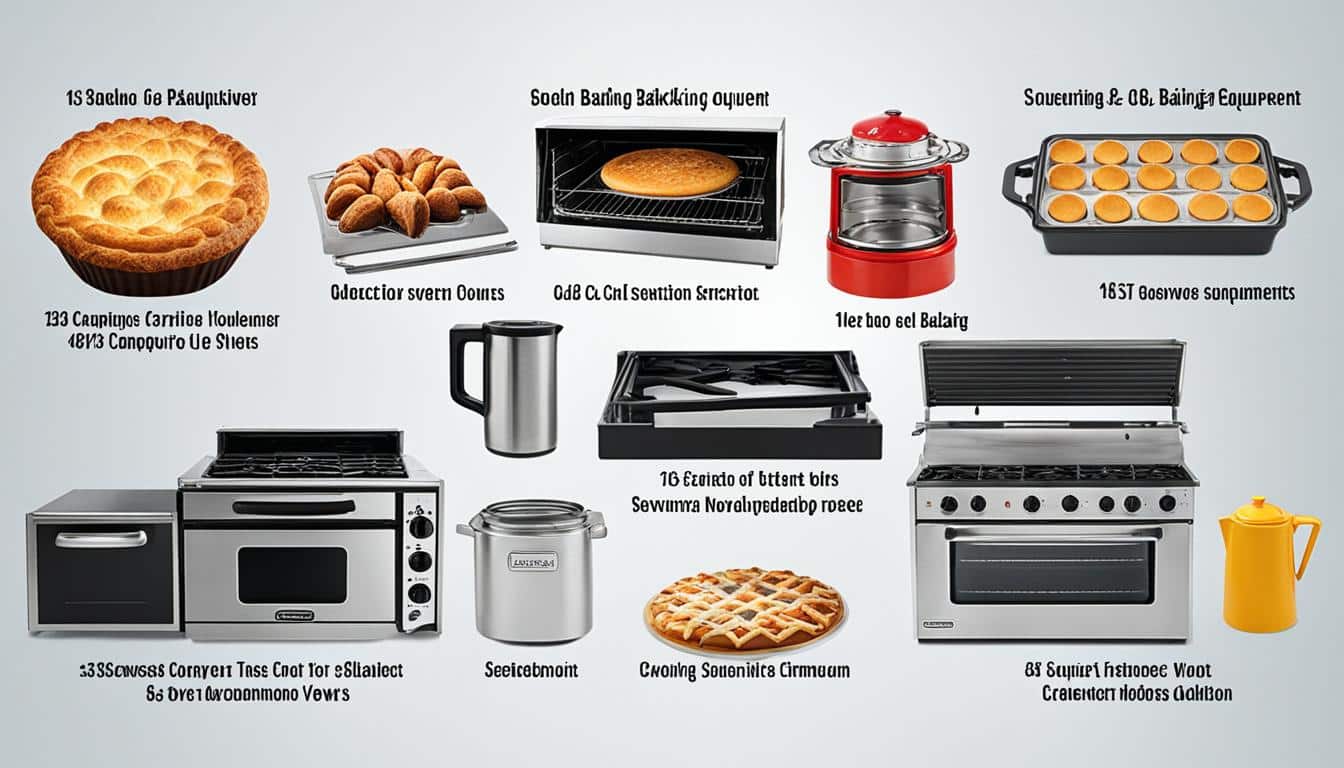
Bread scoring is not just about making cuts on the bread dough; it’s about transforming it into a work of art. Imagine the satisfaction of pulling a beautifully scored loaf out of the oven, with intricate patterns etched into its surface, inviting you to take a bite. The transformative power of bread scoring is undeniable, and it elevates the humble loaf into a canvas for creativity and self-expression.
As a passionate home baker, I have always marveled at the artistry of bread scoring. The way the cuts bloom open during baking, revealing the hidden beauty within, is truly mesmerizing. And it’s not just about aesthetics; bread scoring serves a purpose too. It helps control the expansion of the dough, allowing for an even rise and a light, airy crumb. It’s a fine balance between art and science, where baking techniques merge with artistic sensibility.
I remember the first time I attempted bread scoring. I carefully took my razor blade and made a simple slash on the dough, hoping for a beautiful result. To my surprise, the bread came out of the oven with a bold, dramatic pattern that transformed it into a work of art. That moment sparked my fascination with bread scoring, and I delved deeper into the art, experimenting with different scoring patterns, exploring the possibilities of artistic expression through bread.
Through my journey as a bread scorer, I’ve discovered that the possibilities are endless. From classic patterns like the wheat stalk design to my own interpretations of geometric shapes, each loaf becomes a unique masterpiece. I’ve also learned that the choice of scoring pattern can enhance the flavor and texture of the bread. A simple pattern may give a rustic appearance, while a more intricate design can add a touch of elegance to the loaf.
In this article, I’ll be sharing the secrets I’ve uncovered about bread scoring techniques, the different scoring patterns you can try, and the tools you’ll need to create your own edible artwork. Whether you’re a seasoned bread baker or just starting your journey, I hope to inspire you to explore the art of bread scoring and unleash your creativity. Let’s dive in!
Choosing the Right Dough for Scoring
When it comes to bread scoring, the type of dough you use is important. While most recipes can be scored, there are certain factors to consider to ensure optimal results.
First and foremost, the dough needs to be well-made and properly fermented, shaped, and proofed. This ensures that the dough has developed the right texture and structure for scoring. A well-fermented dough creates a beautiful crumb and enhances the overall flavor of the bread.
The gluten development in the dough plays a crucial role in maintaining the shape of the scored patterns. To achieve good gluten development, it is essential to knead or stretch the dough adequately. This helps the dough become elastic and helps the scored patterns hold their shape during baking.
Additionally, shaping the dough properly is vital. A tightly bound and properly shaped loaf will respond well to the blade when scoring. A well-shaped dough provides a stable surface for the blade to make clean and precise cuts, resulting in beautiful scoring patterns.
Lastly, keeping the dough cold can have a significant impact on the scoring process. A cold proofing method, such as overnight fermentation in the refrigerator or a brief stint in the freezer, helps create a firm and resilient surface. The cold temperature slows down fermentation, allowing the dough to firm up. This gives the scored patterns more definition and a sharper contrast with the crust.
In summary, choosing the right dough is crucial for achieving successful bread scoring. Proper fermentation, gluten development, shaping, and cold proofing are all factors that contribute to creating a dough that is perfect for scoring.
Essential Tools for Bread Scoring
To achieve beautiful bread scoring, you’ll need a few essential tools. Let’s take a look at each one and understand their significance in the art of bread scoring.
1. Flour Sifter
A flour sifter or fine sieve is an indispensable tool for creating contrast and enhancing the visibility of scoring patterns. By evenly spreading a fine layer of white flour on top of the dough, you can achieve a striking contrast that highlights the intricate designs. The flour sifter ensures an even distribution of flour, allowing for precise scoring.
2. Razor Blades
When it comes to scoring, razor blades are the preferred tool for their sharpness and precision. Their thin, razor-sharp edge allows bakers to achieve clean and defined cuts on the dough’s surface. Whether you opt for a straight or curved blade, make sure it is of high quality and properly sharpened. This will ensure clean cuts and prevent any tearing or dragging of the dough.
3. Lame
While some bakers prefer using a blade held in their hand, a dedicated blade holder called a lame can provide better grip and control. A lame typically consists of a handle and a replaceable blade. It allows for precise scoring movements, making it easier to create intricate patterns and designs. Investing in a quality lame can greatly enhance your bread scoring skills.
4. Sewing Thread
One unique tool that the author recommends for bread scoring is sewing thread. Sewing thread adds a touch of creativity and allows bakers to experiment with intricate scoring patterns. By gently pressing the thread into the dough and pulling it through, you can achieve detailed designs that resemble woven patterns. Sewing thread opens up endless possibilities for artistic scoring and adds a distinctive aesthetic to your bread.
Table
| Tools | Significance |
|---|---|
| Flour Sifter | Enhances visibility of scoring patterns by evenly spreading flour |
| Razor Blades | Provides sharpness and precision for clean and defined cuts |
| Lame | Offers better grip and control for precise scoring movements |
| Sewing Thread | Allows for intricate patterns and unique artistic scoring |
Mastering Bread Scoring Techniques
Now that you have the perfect dough and essential tools, it’s time to explore the art of bread scoring. One key aspect that the author emphasizes is the use of radial symmetry. This technique not only enhances the visual appeal of your bread but also ensures even expansion during the baking process.
To achieve radial symmetry, start by creating a center point on your dough using sewing thread. Then, draw four lines radiating from the center, resulting in eight equal sections. This serves as the foundation for various scoring patterns you can create. From the classic wheat stalk design to more intricate designs involving multiple small cuts, the possibilities are endless.
As you delve into scoring, two important factors to consider are depth and speed. The depth of the cuts affects the final texture of your bread, with deeper cuts creating more pronounced patterns. In terms of speed, smooth and confident movements with the scoring tool are key to ensure clean, precise cuts.
Remember, mastering the art of bread scoring takes practice. Don’t be discouraged if your early attempts don’t yield perfect results. With time, patience, and a willingness to experiment, you’ll gradually develop your artistic scoring skills and create stunning loaves of bread that are not only delicious but visually captivating.

